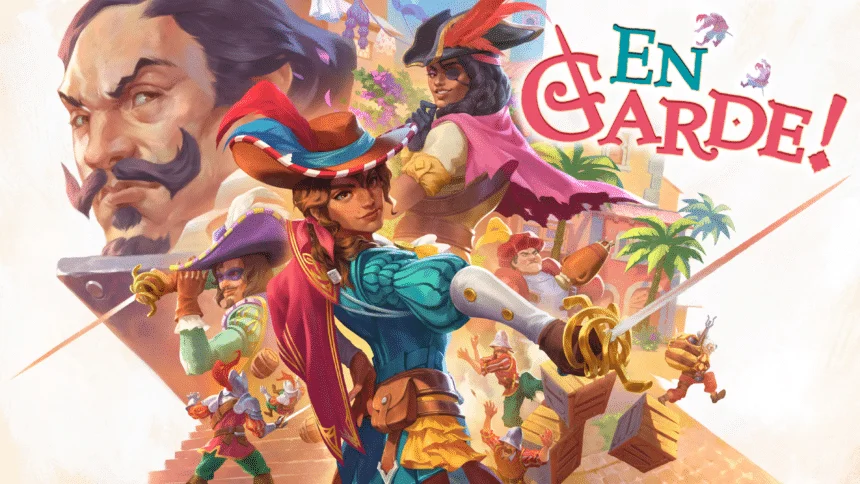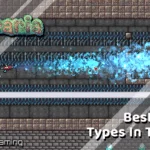En Garde! is a reminder that action games are alive, and continue to reward skillful play to players that want to master their mechanics. I was already in love with the demo I played during the Steam Next Fest, and now that I’ve played En Garde in its entirety, I’m confident in calling it one of the best action games of the year. In my En Garde review, I’ll talk about this lovely adventure starring Adalia de Volador, a name I won’t forget anytime soon!
Characters and Story
En Garde follows the adventures of Adalia de Volador, a swashbuckler anti-hero out to topple the tyrannical regime of the Count-Duke, who serves as the major antagonist of the game. The setting itself isn’t important, and you’ll follow Adalia’s adventures in an episodic format which allows for each story to feel mostly self-contained.

There are a few recurring characters that you’ll meet during your adventures, and each of them is given enough time to develop their relationship with Adalia, while they pursue their own schemes. I found Adalia to be instantly likable because of her sharp wit and unyielding sense of heroism.

Adalia isn’t just sharp-witted in dialogue cutscenes though, but her banter with enemies is a highlight. She comments on their swordsmanship ability, and they often nervously respond back with something hilarious. It’s something I’ve never seen executed so well. The back-and-forth between her and the more elite enemies during duels is quite memorable.

Some of the recurring enemies comment on previous fights, which further adds to the notoriety of Adalia. The story never gets in the way of the combat, and most of it is delivered with dialogue encounters that usually occur between gameplay sections, and last a few seconds.
Combat and Kicking
En Garde’s combat is a bit like Sekiro and Sifu, where you will be parrying quite a bit. Most enemies have a light attack that needs to be parried, indicated by a very visible blue flash. There is another heavier attack that needs to be dodged indicated by a red flash. Dodging while holding a direction means you’ll retain your position. You can also tap the dodge button twice to roll away from the current enemy you’re facing.

The difficulty increases when you have to face off against multiple enemies. You’ll have to parry, dodge, and break guard in an almost rhythmic fashion if you want to stay alive. You can surprise enemies by making use of the environment, like dropping or throwing objects at or near them. You can kick stacks of boxes, or barrels into groups of enemies, which breaks their guard, and surprises them too.

Kicking becomes an essential part of your combat strategy, and you need to first surprise enemies by dodging their red attacks. This leaves them open for a kick, which can break their guard faster, depending on where they land. While parrying, dodging, and kicking will be your main three moves, you’ll unlock special attacks that require the panache meter.
Panache and Using the Environment
The panache meter is kind of like the style meter in hack-and-slash titles. You’re rewarded for diversifying how you play, and in this case, how much you use the environment. Players are encouraged to use their environment from early on in multiple ways. You can kick characters into stacked weapons, off cliffs, down the stairs, and into each other.

You can throw buckets, jars, and even a roast chicken to incapacitate certain enemies while you deal with others. The combat design is enjoyable if not super deep. The increasing difficulty with harder enemy types mixed in creates a challenging experience that rewards skill, timing, and style. Each combat arena gives you enough space to recover even if there are multiple enemies onscreen.
Boss Fights
There are a few boss fights in En Garde as well, and these are a bit of a mixed bag. When it’s an actual duel between you and an important character, these are executed very well, and you need to be on your toes to read their attacks. However, more often than not, you’ll face a mob of enemies either during the fight or between them.
I don’t like mob fights, and it cheapens the boss itself. It makes these fights feel less memorable because I’m suddenly facing off enemies I’d rather face in combat arenas. When I’m fighting a boss, especially if it’s tied to the narrative beat, I want it to feel personal, like a duel.
Presentation and Platforming
En Garde is a beautiful game and uses a watercolor aesthetic to paint a vibrant world that is pleasing to look at. Each new area you’re introduced to is full of little details to check out and feels varied enough to avoid repetition.

You’ll run through marketplaces, escape a dungeon, roam around in a sewer, raid a mansion, and much more.

The variety in levels and the way each is presented is very well done, and there’s no filler content to waste your time with monotony. It’s a focused experience, and the presentation plays a big part in it. There is also the inclusion of light platforming, which usually serves as a break between combat encounters. It’s simple and hard to fail, where you’ll jump between different platforms to get to the next area.

I also liked the particular effect that the game uses to hide objects in the distance. It uses a watercolor filter to make distant objects look like paintings. It’s a nice way to hide unloaded textures with an added artistic touch.

The music is great, and very appropriate to the setting. Weapon clashes sound impactful, and the voice acting is superb all around. It’s a comedy game at its heart, and it’s clear that the cast had a great time playing these characters.
Arena and Replayability
En Garde also features an arena mode where you can fight to your heart’s content. It also has different positive and negative modifiers that can dramatically change the pace of combat forcing you to adapt to different strategies. This is a welcome addition and adds a lot of content for players that want to hone their combat skills.

En Garde’s replayability doesn’t end here though, because after you complete the story episodes, you’ll unlock different challenges within those. You can skip any cutscene or dialogue encounter, so running through the episode doesn’t take a lot of time. These challenges are a lot of fun and usually push you to experiment with the environment and take out enemies creatively.
Verdict
Overall, En Garde is a fantastic ride that will take you around 4 to 5 hours to complete. The characters are memorable, and Adalia is a memorable protagonist who always knows what to say in any situation. The tight combat forces you to make use of the environment in a meaningful way, as you parry, dodge, and kick through waves of challenging enemies. It’s a beautiful game to look at that cleverly uses its watercolor aesthetic. The light platforming ensures solid pacing throughout each episode, while the arena mode adds replayability.

If you’re a fan of Sekiro, Sifu, and other action titles that push you to master gameplay mechanics, En Garde should be high on your list. It’s not as deep as either of those titles, but the overall package is full of charm, wit, and challenge.
What did you think of our En Garde Review? Share what you think about it in the comments below.
This review is based on the PC version of En Garde. The key was provided by The ICO Team and Fireplace Games.











